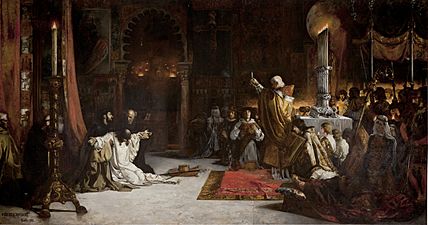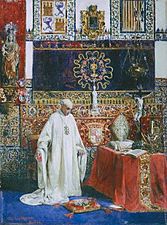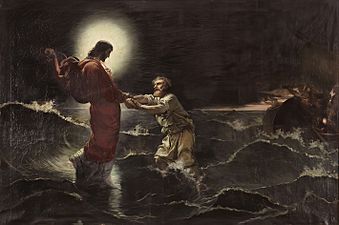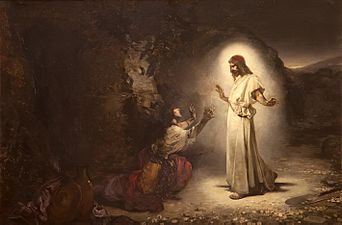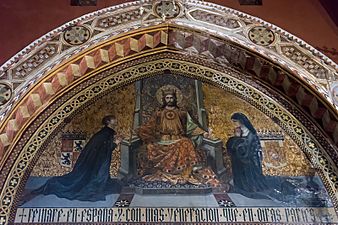Virgilio Mattoni facts for kids
Virgilio Mattoni de la Fuente (1842–1923) was a Spanish painter. He was a key artist in the modern art movement of Andalusia, a region in southern Spain. His style is known as post-romantic realism, which means he painted real-life scenes but with a touch of emotion and drama.
Contents
Who Was Virgilio Mattoni?
Early Life and Art Training
Virgilio Mattoni was born in Seville, Spain, on January 30, 1842. His parents were Felipe Mattoni and María Lutgarda de la Fuente.
He started his art education early, attending the Provincial School of Fine Arts in Seville from 1856 to 1868. This was a long time to study art! He learned from important teachers like Eduardo Cano. Cano was famous for his historical paintings and even won a big art competition called the National Exhibition of Fine Arts in 1856. Another one of Mattoni's teachers was Joaquín Domínguez Bécquer, who was also a well-known painter from Seville.
After his studies in Seville, Mattoni traveled to Rome, Italy. He continued his art training at the Chigi Academy there from 1872 to 1874.
Becoming a Famous Artist
When Mattoni returned to Seville, he opened his own art studio in the Santa Cruz neighborhood. His talent was quickly recognized.
- In 1886, he became a member of the Royal Academy of Fine Arts of San Fernando de Madrid. This was a very important art academy in Spain.
- In 1887, he was chosen to be a teacher in the Painting Section of the Provincial School of Fine Arts of Seville. This school later became part of the University of Seville.
- In 1917, Mattoni was made the Director of the Academy of the Applied Arts. This shows how respected he was in the art world.
Virgilio Mattoni passed away in Seville on January 20, 1923, when he was 80 years old.
What Kind of Art Did Mattoni Create?
Themes and Techniques in His Paintings
Mattoni was known for painting different kinds of subjects. He created:
- Portraits: Paintings of people.
- Religious themes: Scenes from the Bible or about saints.
- Historical themes: Paintings that showed important events from the past.
He wasn't just a painter; he also wrote articles about art history. People thought he was a very good writer and poet too!
Mattoni was asked to paint large wall paintings (murals) and altarpieces (art for altars) in churches. He liked to try out old art methods, like medieval techniques of gilding (adding gold) and embossing (creating raised designs). He was also very good at using color and light to make his paintings interesting.
His Most Famous Works
Mattoni won awards for his art.
- In 1881, he won the Second Medal at the National Exhibition of Fine Arts for his painting Las termas de Caracalla (The Baths of Caracalla). This painting shows the ancient Roman baths. Even though his painting doesn't exactly match what the ruins look like today, it is considered his most important work. He had visited Rome before painting it, which helped him imagine the scene.
- In 1887, he won the Third Medal for his painting Las postrimerías de Fernando III el Santo (The Last of Ferdinand III, the Saint). This painting shows the final moments of King Ferdinand III of Castile, as described by his son, King Alfonso X.
Gallery
-
The Last of Ferdinand III, the Saint, 1887
See also
 In Spanish: Virgilio Mattoni para niños
In Spanish: Virgilio Mattoni para niños



